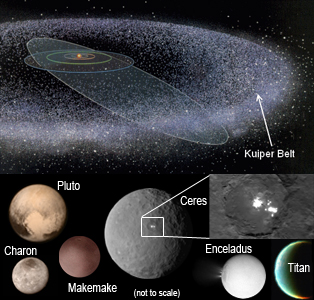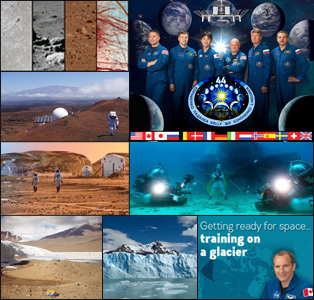Solar System Human Mission Design Project: Welcome to the Third Zone |
MONDAY
|

![]() = All times
= All times
for terrestrial events in local time unless noted.
![]() = All times for international terrestrial events in local time unless noted.
= All times for international terrestrial events in local time unless noted.
![]() = All times for space events, and…
= All times for space events, and…
![]() = All times for international space / astro events in Hawaii Standard Time unless noted. Add 10 hours to obtain UT (‘Universal Time;’ Greenwich, England).
= All times for international space / astro events in Hawaii Standard Time unless noted. Add 10 hours to obtain UT (‘Universal Time;’ Greenwich, England).
Weekly Planet Watch – Evening Planets: Venus (W), Jupiter (W), Saturn (S); Morning Planets: Uranus (SE), Neptune (S).
Human Space and Extreme Environment Research
|
Continued from…
TUESDAY
|
![]() Jul 21-23 — NASA Solar System Exploration Research Virtual Institute (SSERVI), Moffett Field CA: 2015 NASA Exploration Science Forum; scientific discussions of exploration targets of interest (Moon, near-Earth asteroids, moons of Mars); at Ames Research Center.
Jul 21-23 — NASA Solar System Exploration Research Virtual Institute (SSERVI), Moffett Field CA: 2015 NASA Exploration Science Forum; scientific discussions of exploration targets of interest (Moon, near-Earth asteroids, moons of Mars); at Ames Research Center.
![]() Jul 21 — Moon: At apogee (distance 404,367 km), 01:00.
Jul 21 — Moon: At apogee (distance 404,367 km), 01:00.
![]() Jul 21 — Asteroid 2010 PR66: Near-Earth flyby (0.063 AU).
Jul 21 — Asteroid 2010 PR66: Near-Earth flyby (0.063 AU).
WEDNESDAY
![]() Jul 22 — RSA, Launch Soyuz TMA-17M / ISS 43S, Baikonur Cosmodrome, Kazakhstan: An RSA Soyuz rocket set to launch members of Expedition 44/45: Kjell Lindgren of NASA, Kimiya Yui of JAXA, Oleg Kononenko of RSA.
Jul 22 — RSA, Launch Soyuz TMA-17M / ISS 43S, Baikonur Cosmodrome, Kazakhstan: An RSA Soyuz rocket set to launch members of Expedition 44/45: Kjell Lindgren of NASA, Kimiya Yui of JAXA, Oleg Kononenko of RSA.
![]() Jul 22 — ULA, Launch Delta 4 / WGS 7, Cape Canaveral AFS FL: United Launch Alliance Delta 4 rocket to launch 7th Wideband Global SATCOM spacecraft for U.S. military.
Jul 22 — ULA, Launch Delta 4 / WGS 7, Cape Canaveral AFS FL: United Launch Alliance Delta 4 rocket to launch 7th Wideband Global SATCOM spacecraft for U.S. military.
![]() Jul 22 — Australia Telescope National Facility, Sydney, Australia: Colloquium: New Insights Into How the Galaxy-Black Hole Connection Works; presented by Kevin Schawinski.
Jul 22 — Australia Telescope National Facility, Sydney, Australia: Colloquium: New Insights Into How the Galaxy-Black Hole Connection Works; presented by Kevin Schawinski.
THURSDAY
![]() Jul 23 — Chandra X-ray Observatory, HEO: NASA spacecraft in extended mission phase enters 17th year of operations in Space; instruments able to detect X-ray sources 100 times fainter than any previous X-ray telescope.
Jul 23 — Chandra X-ray Observatory, HEO: NASA spacecraft in extended mission phase enters 17th year of operations in Space; instruments able to detect X-ray sources 100 times fainter than any previous X-ray telescope.
![]() Jul 23-26 — Intrepid Sea, Air and Space Museum, NYC NY: 4th Annual Space & Science Festival; featuring Astronauts, satellites in real time, discussions on the future of space exploration.
Jul 23-26 — Intrepid Sea, Air and Space Museum, NYC NY: 4th Annual Space & Science Festival; featuring Astronauts, satellites in real time, discussions on the future of space exploration.
![]() Jul 23 — Moon: 3.9° NNE of Spica, 04:00; at first quarter, 18:08.
Jul 23 — Moon: 3.9° NNE of Spica, 04:00; at first quarter, 18:08.
![]() Jul 23 — Mercury: At superior conjunction (distance 1.337 AU from Earth), 09:00.
Jul 23 — Mercury: At superior conjunction (distance 1.337 AU from Earth), 09:00.
FRIDAY
![]() Jul 24-25 — University of California – Berkeley, Berkeley CA: Workshop on Results from NASA’s Stardust Mission; at Hillside Club.
Jul 24-25 — University of California – Berkeley, Berkeley CA: Workshop on Results from NASA’s Stardust Mission; at Hillside Club.
![]() Jul 24 — Asteroid 2015 LC21: Near-Earth flyby (0.049 AU).
Jul 24 — Asteroid 2015 LC21: Near-Earth flyby (0.049 AU).
SATURDAY
![]() Jul 25 — The British Interplanetary Society, London, United Kingdom: 70th Annual General Meeting of the British Interplanetary Society.
Jul 25 — The British Interplanetary Society, London, United Kingdom: 70th Annual General Meeting of the British Interplanetary Society.
![]() Jul 25-26 — University of California – Berkeley, Berkeley CA: Workshop: The First Billion Years of Impact Records – Evidence from Lunar Samples and Meteorites.
Jul 25-26 — University of California – Berkeley, Berkeley CA: Workshop: The First Billion Years of Impact Records – Evidence from Lunar Samples and Meteorites.
![]() Jul 25 – Aug 2 — Canadian Space Agency, Kaskawulsh Glacier, Yukon, Canada: Astronaut Training Mission; CSA Astronaut David Saint-Jacques & team participating in training expedition to explore methods & techniques for conducting geological fieldwork that could be applied to future missions to Moon, Mars, Asteroids.
Jul 25 – Aug 2 — Canadian Space Agency, Kaskawulsh Glacier, Yukon, Canada: Astronaut Training Mission; CSA Astronaut David Saint-Jacques & team participating in training expedition to explore methods & techniques for conducting geological fieldwork that could be applied to future missions to Moon, Mars, Asteroids.
![]() Jul 25 — Moon: 2.4° NNW of Saturn, 21:00.
Jul 25 — Moon: 2.4° NNW of Saturn, 21:00.
![]() Jul 25 — Mars: 9.2° S of Castor, 01:00.
Jul 25 — Mars: 9.2° S of Castor, 01:00.
![]() Jul 25 — Asteroid 85989 (1999 JD6): Near-Earth flyby (0.048 AU).
Jul 25 — Asteroid 85989 (1999 JD6): Near-Earth flyby (0.048 AU).
SUNDAY
![]() Jul 26-31 — Sally Ride Science, Stanford University, Stanford CA: Sally Ride Science Camp.
Jul 26-31 — Sally Ride Science, Stanford University, Stanford CA: Sally Ride Science Camp.
![]() Jul 26 – Aug 16 — Aspen Center for Physics, Aspen CO: Workshop: Neutrinos from Space and on Earth.
Jul 26 – Aug 16 — Aspen Center for Physics, Aspen CO: Workshop: Neutrinos from Space and on Earth.
![]() Jul 26 — Moon: 9.3° N of Antares, 20:00.
Jul 26 — Moon: 9.3° N of Antares, 20:00.
![]() Jul 26 — Mercury: 0.47° N of Beehive Cluster, 16:00.
Jul 26 — Mercury: 0.47° N of Beehive Cluster, 16:00.
![]() Jul 26 — Asteroid 2015 LJ: Near-Earth flyby (0.049 AU).
Jul 26 — Asteroid 2015 LJ: Near-Earth flyby (0.049 AU).

